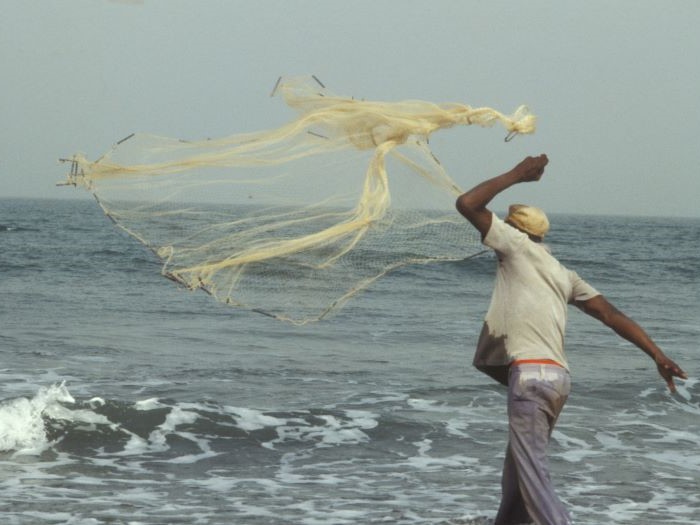A healthy ocean for a cooler planet

©FAO/Kurt Arrigo
Take a deep breath. Now ponder this: the big, blue ocean that covers 71 percent of the Earth produces over 50 percent of our oxygen. The ocean is also key to cooling the planet, absorbing 90 percent of the excess heat caused by global warming and capturing 25 percent of all carbon dioxide emissions.
As the Earth’s largest carbon sink, the ocean plays a pivotal role in reducing global greenhouse gas (GHG) emissions, but it also hosts 80 percent of the world’s biodiversity and provides millions of people with food and income.
But harmful, human activities such as unsustainable fisheries and marine pollution threaten to deplete marine life, disrupt ecosystem services, and destroy livelihoods. So what can we do to turn the tide and take action to keep our oceans healthy?
One of the ways the Food and Agriculture Organization of the United Nations (FAO) is tackling this question is by scaling up investment in sustainable fisheries through its partnership with the Green Climate Fund (GCF). Here are three examples of climate action promoting a better environment and better lives in the Gambia, Cabo Verde and Saint Lucia.
Restoring mangroves in the Gambia
The Gambia contributes just 0.01 percent to global GHG emissions, but climate change threatens the future supply of fish – the nation’s main source of protein. In this low-lying coastal country, rich in biodiversity with over 600 fish species, poor fisherfolk depend on marine, coastal and riverine fisheries for their food security and livelihoods.
But increases in water temperature, salinity and acidity associated with climate change threaten to deplete fish stocks. Extreme winds, high waves and sea level rise are also expected to cause damage to fisheries infrastructure, leading to higher food waste and loss in the fish value chain.
To address climate threats, FAO and the Government of the Gambia (a Least Developed Country) are collaborating on the pioneering, PROREFISH project. With a total value of USD 25 million and over 400 000 beneficiaries, the project is set to climate-proof fisheries infrastructure, restore over two thousand hectares of degraded mangrove areas and critical fisheries hotspots, and protect livelihoods in coastal communities.
 A fisherman casts a net near the seashore in the Gambia. © FAO/K. Boldt
A fisherman casts a net near the seashore in the Gambia. © FAO/K. Boldt
Towards a blue economy in Cabo Verde
More than 80 percent of the population in Cabo Verde lives in coastal areas. FAO is implementing the country’s first GCF readiness project aimed at developing the blue economy – defined as the sustainable use of ocean resources for economic growth, improved livelihoods, and jobs while preserving the health of ocean ecosystem.
The initiative centres on creating networks in key blue economy sectors and increasing awareness about the impacts of climate change.
As a specialized agency of the United Nations, FAO extends its expertise to help the country map and identify key fish species that are vulnerable to the impacts of climate change – in terms of abundance, growth, migration and catchability – and promote ocean-based food security through sustainable fishing practices.

Cape Verde - artisanal fishing boats on Pedro Beach. © FAO/Luis Costa
Empowering women in Saint Lucia
The connection between food security and fisheries is evident in Small Island Developing States, like Saint Lucia. But women’s roles in fisheries are less obvious because they often work as fish processors and vendors – roles which tend to be excluded from national databases.
Aside from having less visible roles in the fisheries value chain, women have limited decision-making powers. To address the gender gap in the fisheries sector, FAO is leading a GCF readiness project that brings gender issues to light in fisheries, and provides solutions for women’s inclusion in climate adaptation action.
For example, one of the project’s activities involves consulting with fisherfolk to assess gender issues at fish landing sites. Another component provides women and men with training on the impacts of climate change, such as the damage and loss of coral, mangrove and seagrass ecosystems, which are vital fish nursery and breeding habitats.
The ocean is life. Let’s put oceans first!
For more on this topic see:
- The FAO-GCF Partnership website
- FAO’s GCF projects in Small Island Developing States
- The PROREFISH project


